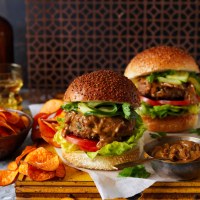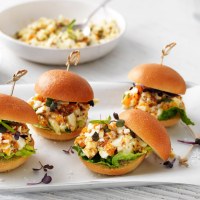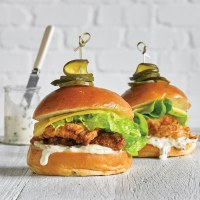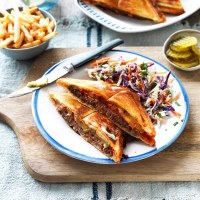How to stack the perfect burger
Onion on the bottom or the top? Shredded or un-shredded lettuce? We’re here to end the burger debate, with good reasons why you should stack your burgers a certain way.
Really, as long as your burger remains stacked and delicious, anything goes, but if you’re looking for perfection, these tips will help you reach burger bliss.
How to layer a burger
- Start from the bottom with a lightly toasted bun
- Add at least a teaspoon of your chosen sauce
- Lettuce next, use a whole leaf to catch any patty juices
- Thick slices of tomato
- The star, your patty with melted cheese
- Pickles and onions settle nicely on that melted cheese
- Top it off the the other half of the bun slathered with sauce
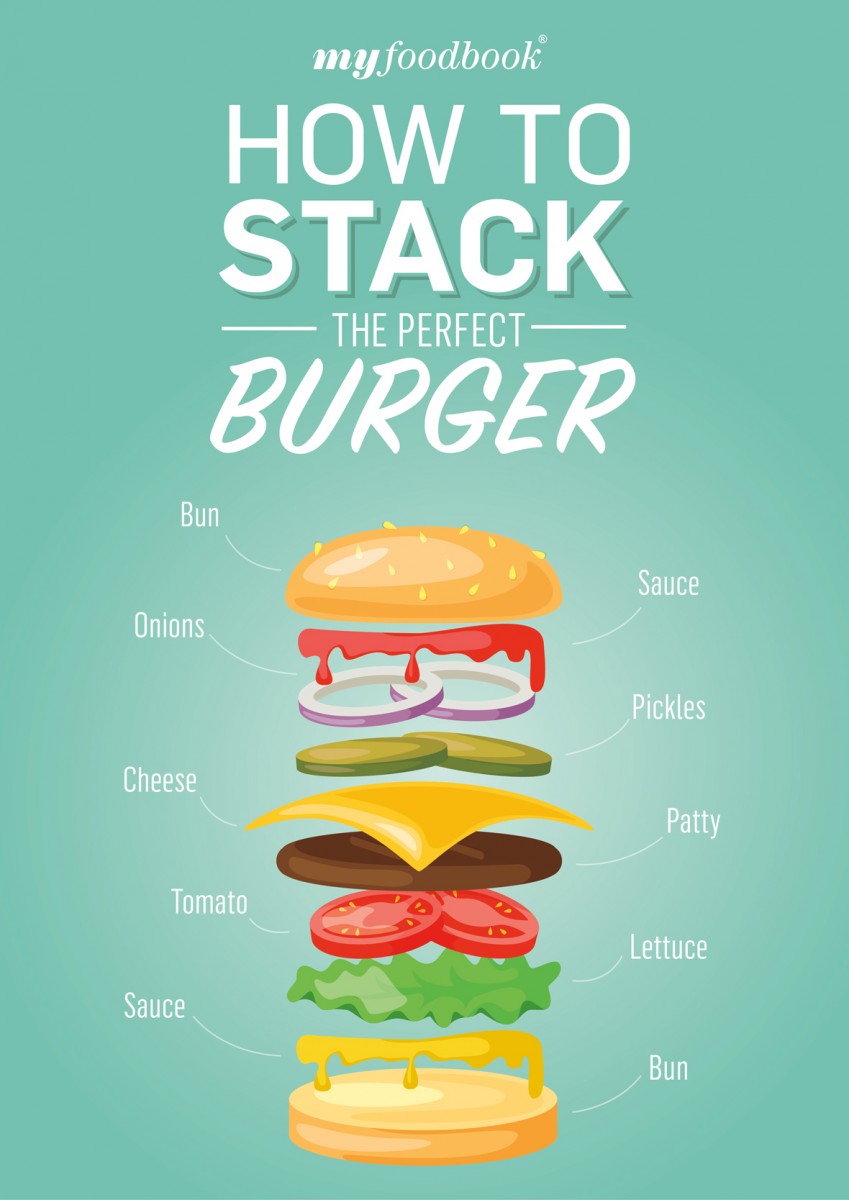
The best buns for burgers
Not all buns are created equal. Too soft and it will fall apart, too hard and your fillings will end up on the table.
Soft patties made with mince or veggies work better with soft buns. Try the classic seeded buns, brioche, milk buns or potato buns. A steak or chicken burger is less delicate, so it can work well with denser bread such as ciabatta buns. Going low-carb? Why not try a burger with a mushroom bun or follow this guide to low-carb burgers.
Toast the cut side of your bun under a grill or in a hot, dry pan. This adds crunch and also helps keep the bun from going soggy with sauces and juices. If you like a crunchier burger, toast both sides. Avoid over-toasting as this can make the bun too dry and hard.
Classic burger sauce ideas
Sauces are essential. They keep your burger from being dry, and provide sharpness, tanginess, sweetness or creaminess to your burger, helping to cut through all the richness.
You can buy burger sauces or make them yourself. Apart from your standard tomato or BBQ sauce, try these sauce combos in your next burger:
- Classic burger sauce: mix equal parts tomato sauce, mayo and mild mustard plus pickle brine to taste.
- Spicy burger sauce: mix tomato sauce with chutney, mustard and hot sauce.
- Asian-style sauces: Thai sweet chilli, Sriracha mayo, wasabi mayo or gochujang.
- Ideal for fish and chicken burgers: mix mayonnaise with your choice of chopped herbs, capers, pickles, chipotle chilli and lemon juice.
- Healthier ideas: pesto, hummus, healthy BBQ sauce, tzatziki.
Remember to sauce both sides of the bun, and be generous. Use at least a teaspoon on each side. Mix and match sauces on the top and bottom to add more flavours to your burger.
What type of lettuce is best for burgers?
Putting lettuce in a burger isn’t for “veggie smuggling”, it’s adds texture and freshness. Plus, placing lettuce under the patty helps to keep the bun from getting soggy.
Iceberg and cos lettuce leaves are great varieties to provide crunch without competing flavours. They’re particularly good for beef or lamb burgers. For softer patties such as fish or veggie, consider using soft leaf varieties such as butter lettuce, red oak leaf or even rocket. Use whole leaves rather than shredded lettuce for optimal crunch and to avoid wilting.
TIP: For a photo-worthy burg, let the lettuce spill over the bun for colour.
The best tomato for burgers
Choose ripe, firm tomatoes that aren’t too pulpy. You can find meaty varieties of tomatoes such as beefsteak and other heirloom tomatoes from gourmet grocers. Vine-ripened tomatoes have great flavour. Slice tomato thickly, around 5-6mm thick. Don’t forget to season with salt and pepper before adding to your burger.
The perfect burger patties
The star of the show! Whether you’re eating red meat, chicken, fish or going veggo, quality ingredients will make your burgers shine. For meat patties, choose mince with a high fat content. Higher fat means a more succulent burger that bastes itself from the inside out while cooking.
If using lean mince, keep it juicy by adding ingredients such as sauces, vegetables, egg and breadcrumbs.
Don’t overwork the meat. Only mix until the ingredients are just combined. Over mixing will lead to shrinking and a hockey puck texture.
Gently shape patties to be a little larger than your buns, they will shrink a little once cooked. Place onto a tray and cover, keeping cold. Always rest your patties in the refrigerator while preparing the rest of your ingredients. Remove from the fridge 15 minutes before cooking. While your patties are cooking, begin building your burger so it's hot when you serve it.
How to melt cheese on a burger patty
If you have cheese on your burger, it should be melted. Place cheese on top of the patties in the last 30 or so seconds of cooking and cover with a lid or bowl to help it melt.
Choose a firm cheese such as mozzarella, cheddar, gouda or tasty, something that will not overpower the flavour of the patty and has a great melting quality.
Pickles and onions
Pickles should help balance your burger with sharp tanginess. Choose a variety of pickles that are tangy and slice thinly. Just 2-4 slices are a good place to start to avoid overpowering the other flavours in the burger.
Onions can be added either raw or cooked. Raw onions add bite, freshness and a crisp texture. Red onions are a good choice as they are a little sweeter. If you only have white onions, slice and place in a bowl of cool water while you prepare your burgers to reduce some of the bite. Drain on paper towel before adding to burger.
Caramelised onions give a sweet flavour and creamy texture. To cook onions, thinly slice and caramelise your choice of onion until they are golden, softened and collapsed.
More burger recipes
Click here for more burger recipes or check out more below!
GET THE RECIPE: Lamb Korma Burgers with Onion Curry Sauce by Passage to India




